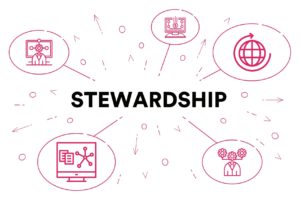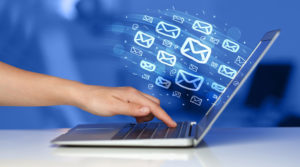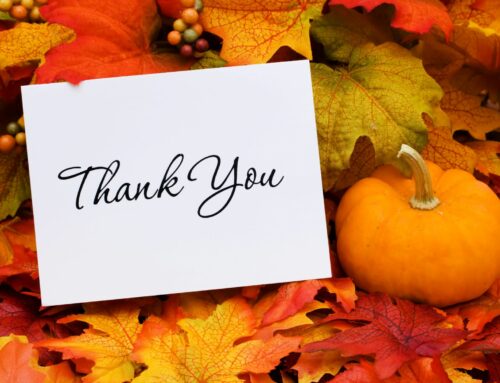When it comes to online fundraising, how does your nonprofit stack up?
Do you have a prominent “Donate Now” button on your website? A stellar donation page? Are you receiving online donations at a steady rate?
 Check, check, and check, you might be saying to yourself. (If not, you can make a note to amend these online fundraising mistakes)
Check, check, and check, you might be saying to yourself. (If not, you can make a note to amend these online fundraising mistakes)
Well, what happens after your donors have pressed the “Make a Donation” button on your form? Even the most tech-savvy nonprofits may struggle with the next steps, vital as they are.
Once a donor gives online, you need to start the stewardship process. Your online donors, after all, are just as valuable to your cause as your other supporters.
Donor stewardship is about more than retaining donors. It’s about building stronger, lasting relationships so that donors engage with your nonprofit at increasingly advanced levels. They may donate larger amounts, give more frequently, or offer more involved support for your mission.
Either way, stewardship is vital to growing a healthy online donor base.
Let’s take a look at our 6 steps to stewarding online donors effectively:
- Use online giving software.
- Offer multiple giving options.
- Customize donation receipts.
- Amp up your confirmation page.
- Give a sincere thank you.
- Send relevant, engaging emails.
Let’s get started with the first step.
1. Use online giving software.
Using online giving software is the foundation of not just your stewardship, but all of your online fundraising efforts.
However, it’s especially important that you choose a platform that can integrate with your stewardship plan.
What features should you look for when choosing (or swapping!) your online giving software?
Here are some important considerations:
- CRM Integration. When new donors give online, or if current donors input new information into your online donation form, you’ll need a way to access it so that you can flesh out your donor profiles and connect more naturally with your donors. Strong online software should offer CRM integration so that this information is catalogued in an accessible format.
- Account creation. The ability for donors to create accounts when they donate is a great way to keep them invested in your organization. With this feature, donors are able to manage their donations and payment methods, which gives them more control over their giving experience. It’s important that you never require donors to create an account, though — simply give them the option!
- Recurring giving. Convenience is key to meeting donors in their busy lives. You can better steward your donors if you make giving easy because they’ll be more inclined to donate again if they know the process is simple. Including an option to set up automatic recurring gifts is a great way to retain donors without requiring them to go through a lengthy process or schedule a donation on their calendar every month or so.
These are only a few of the features that are important when considering your online giving software.
Ultimately, you want to choose a software that makes the giving process as simple and rewarding as possible for your donors3.
At the same time, your platform should help your organization create a more informed stewardship strategy by providing insight into your donors’ giving patterns and information.
2. Offer multiple giving options.
 There are many reasons to offer multiple giving options on your online donation form. One reason is that it can encourage donors to give more than they normally would.
There are many reasons to offer multiple giving options on your online donation form. One reason is that it can encourage donors to give more than they normally would.
In terms of stewardship, giving options allow you to meet your donors’ expectations with their gifts.
To do so, you can define how each gift amount will be used for your cause. Be as specific as possible.
Let’s take a look at an example. Say your organization is a big cat rescue. On your donation page, you can specify what each gift can accomplish, as follows:
$50 will purchase a new scratching post to keep our tigers happy and healthy.
$100 will feed our lions for a month.
$500 will aid in our rescue efforts for big cats in poor conditions.
When you set your donors’ expectations, you have a greater chance of satisfying them.
After all, stewardship is about managing your donors’ gifts and expectations with care.
Outright stating what certain gift amounts will accomplish takes the guesswork away from both you and the donor, so that you can focus on building a stronger relationship.
3. Customize donation receipts.
Your online giving software likely offers an automatic donation receipt feature.
Sending quick, immediate donation receipts is important for online donors, because receipts confirm that your nonprofit has successfully processed the donation.
However, personalization should not be sacrificed for speed. You can use donation receipts to steward donors by customizing them.
A custom donation receipt shows that your nonprofit has put forth a deliberate effort to acknowledge the donor’s gift.
To create the most effective receipt strategy, you’ll want to:
 Thank donors. Though a donation receipt isn’t necessarily your formal thank you letter, you should still use this opportunity to offer your gratitude to donors. Include a “thank you” in your receipt email subject line and at the top of the email.
Thank donors. Though a donation receipt isn’t necessarily your formal thank you letter, you should still use this opportunity to offer your gratitude to donors. Include a “thank you” in your receipt email subject line and at the top of the email.
- Personalize receipts. Always include the donor’s preferred name and title on the receipt. Avoid overly formal language or legalese. You can include the important legal information near the bottom of the receipt, but to start out, greet your donors with sincerity (ex: Thank you, Sharon, for furthering our cause to save big cats!).
- Be specific. Acknowledge the specific donation amount, as well as the campaign that a donor gave to. (ex: Your $100 donation will provide tigers like Stripes with food for an entire month).
- Include relevant photos. If possible, include photos of the recipients of your aid in your donation receipt. That way, donors will feel more connected to your cause.
Following a custom receipt strategy will show your donors that they’re important to your organization and that your nonprofit cares about them as individuals, not just as donations.
4. Amp up your confirmation page.
What’s the first thing donors see after they press the donation button? Your confirmation page.
Now is the chance to make your first stewardship impression.
One of the best ways to steward donors is to offer more opportunities for engagement. You don’t want to initiate another ask; after all, you want your donors to feel appreciated!
So what kind of content can you include on your confirmation page?
You can include:
- Social media integration. We live in a digital age. Once a donor gives, they may want to share their donation with their social networks. Including Facebook, Twitter, or Google+ sharing buttons can allow donors to do just that, quickly and easily! If donors integrate their donation with their social presence, then they may be more inclined to continue supporting your nonprofit. Plus, you can acquire new donors in the process!
- Shareable content. Publicly sharing a donation isn’t everyone’s cup of tea. You can still merge giving with your donors’ social networks by prompting donors to share valuable content. A video that shows the recipients of your nonprofit’s aid being helped is a great example. When donors share this video with their networks, they’re making a public statement of their support, which can encourage their friends to get involved, too.
- Upcoming events or volunteer opportunities. Stewarding donors means keeping them involved. Links to upcoming fundraising events or volunteer opportunities can show donors that you want them along for the ride.
The goal is to use your confirmation page to keep donors invested and interested in your nonprofit after they’ve already given.
5. Give a sincere thank you.
It’s vital that your online donors don’t slip through the cracks. You’ll need to send them a sincere thank you, likely through an online channel such as email.
The thank you should be prompt, but it doesn’t have to be immediate.
Taking extra time to learn about your online donors can help you personalize your thank yous to the donors’ preferences and potential.
After all, online donation forms have the capacity to reach a wide variety of donors. You may acquire new donors through crowdfunding or peer-to-peer campaigns, for example.
A new donor may give a moderate, but substantial, gift online while holding major donor potential6. In this case, a donor may require a personal phone call, rather than an email, to learn more about their gift.
You won’t know unless you take the time to research these donors or flesh out your current donor profiles7.
That way, when you send your thank you, you’ll have a better grasp on who your donors are as contributors and what paths they can take with your organization.
In short, a sincere thank you is based upon actually knowing who the donor is. The more you know your donors, the better you can thank them appropriately.
Remember that all donors deserve thanks. Small or mid-sized donors may not receive a personal phone call, but you can still make your thank you meaningful by:
- Updating the donor. Update the donor on the progress of your campaign so that they can see how their gift is being used for good.
- Letting the recipients of your aid speak. Ask the recipients of your aid how they are being helped. Allow them to express their personal gratitude or tell their stories. Or, in the case of our big cats example, you can include a cute photo with a “thank you” written as the caption. The point is to put the spotlight on the people or animals that your donors care about.
- Use donor-centric language. Do not talk about your nonprofit. Or at least, keep your language focused on what “you,” the donor, has done. Not on what “we,” the nonprofit, have accomplished.
While these strategies can be applied to all donors, you can send more prominent gestures of gratitude to high-level donors, who likely expect more than an email for their gifts.
To steward these donors properly, you can meet in person to learn more about their gift. Or, you can try sending a personalized video to demonstrate your thanks.
6. Send relevant, engaging emails.
To properly steward online donors, you’ll need to send them relevant updates about your nonprofit.
Online donors have demonstrated that they enjoy giving through an online channel; it’s likely that they’ll also enjoy receiving information in the same way.
Staying in touch with your donors is important for keeping them invested in your organization. Of course, you’ll want to send more than the occasional ask.
You can use your CRM to segment your email list9 so that donors are receiving the information that’s most relevant to them. You wouldn’t, for instance, want to email a long-time donor (who just gave their first online contribution) a newsletter that welcomes them to the organization.

Specific, informative, and engaging content is the best way to spice up your emails.
But you can also use this channel to further your stewardship efforts beyond the online giving world.
You can, for instance, send personal email invites to events.
Fundraising events are great fun for everyone. But you can also host non-ask events specifically designed to steward donors.
If your know your donors are receptive to online communication channels, email may be the perfect way to meet these donors face-to-face!
Stewarding your online donors can keep them happy and invested in your organization.
These strategies can help ensure that you’re treating all of your donors as the valuable individuals that they are!
Resources
- https://www.qgiv.com/
- https://getfullyfunded.com/10-things-your-online-donors-want/
- https://www.qgiv.com/blog/donor-stewardship-cultivation-guide/
- https://getfullyfunded.com/15-tips-to-build-donor-relationships-through-stellar-stewardship/
- http://articles.salsalabs.com/major-gifts-guide/
- https://doublethedonation.com/nonprofit-software-and-resources/prospect-research-tools/
- https://getfullyfunded.com/7-must-dos-when-thanking-donors/
- http://blog.fundly.com/nonprofit-crm-complete-guide/
- https://www.neoncrm.com/planning-fundraising-events/
- https://getfullyfunded.com/4-keys-keeping-happy-donors-repeat-gifts/
About the Author
 Abby Jarvis is a blogger, marketer, and communications coordinator for Qgiv, an online fundraising service provider. Qgiv offers industry-leading online giving and peer to peer fundraising tools for nonprofit, faith-based, and political organizations of all sizes. When she’s not working at Qgiv, Abby can usually be found writing for local magazines, catching up on her favorite blogs, or binge-watching sci-fi shows on Netflix.
Abby Jarvis is a blogger, marketer, and communications coordinator for Qgiv, an online fundraising service provider. Qgiv offers industry-leading online giving and peer to peer fundraising tools for nonprofit, faith-based, and political organizations of all sizes. When she’s not working at Qgiv, Abby can usually be found writing for local magazines, catching up on her favorite blogs, or binge-watching sci-fi shows on Netflix.






Leave A Comment